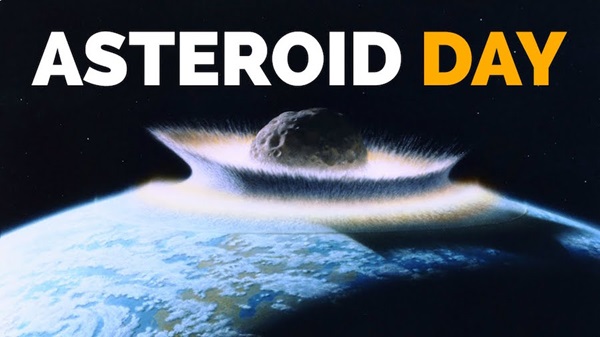Key Takeaways:
A central focus of the event was the release of a 100x Declaration, calling for the hundredfold increase in the detection and monitoring of asteroids. Lord Rees read the declaration, which resolves to “solve humanity’s greatest challenges to safeguard our families and quality of life on Earth in the future.”
The declaration calls for three key actions:
- Employ the available technology to detect and track near-Earth asteroids that threaten human populations
- A rapid hundredfold (100x) acceleration of the discovery and tracking of near-Earth objects
- Global adoption of Asteroid Day on June 30, 2015, to heighten awareness of the asteroid hazard and efforts to prevent future impacts.
The 100x Declaration was signed by more than 100 noted scientists, physicists, artists, and business leaders from 30 countries, including Richard Dawkins, Brian Cox, Anousheh Ansari, Kip Thorne, Stewart Brand, investors Shervin Pishevar and Steve Jurvetson, Alan Eustace and Peter Norvig of Google, Peter Gabriel, Jane Luu, Helen Sharman, Jill Tarter, and more than 38 astronauts and cosmonauts. For a full listing of signatories, visit: www.asteroidday.org/signatorieslist.
“The more we learn about asteroid impacts, the clearer it becomes that the human race has been living on borrowed time,” remarked Brian May. “We are currently aware of less than 1 percent of objects comparable to the one that impacted at Tunguska, and nobody knows when the next big one will hit. It takes just ONE.”
“The ancients were correct in their belief that the heavens and the motion of astronomical bodies affect life on Earth just not in the way they imagined,” explained Lord Martin Rees. ”Sometimes those heavenly bodies run into Earth. This is why we must make it our mission to find asteroids before they find us.”
Events for Asteroid Day will be organized by individuals and independent organizations around the world June 30, the anniversary of the asteroid impact at Tunguska, Siberia, which destroyed 800 square miles, the equivalent size of any major metropolitan area. The events will focus the world’s attention not just on the nature of asteroids, but importantly lead discussions on solutions that will protect all of humanity from future asteroid impacts. Members of the public are encouraged to go to asteroidday.org to sign up and become a founding member of Asteroid Day.
The Founding Partners of Asteroid Day include The Planetary Society, Astronomy magazine, the Association of Space Explorers, the California Academy of Sciences, Seattle’s Museum of Flight, the Sentinel Mission, and Starmus.
“We have the technology to deflect dangerous asteroids through kinetic impactors and gravity tractors but only if we have years of advance warning of their trajectories,” stated Dr. Ed Lu, three-time shuttle astronaut and co-founder of the Sentinel Mission. “Now we need the resolve to go forward. It is the only natural disaster we know how to prevent.”
“Someday humankind will have to prevent an asteroid impact. We will need to work together to get it done,” said Bill Nye, CEO of The Planetary Society, a nonprofit organization that empowers citizens to advance space science and exploration, funds amateur and underfunded astronomers searching for near-Earth asteroids.
“We will play a significant role in promoting Asteroid Day,” Nye continued. “The first step toward protecting our planet is to find and track the swarm of space rocks that cross orbits with Earth. Let’s get going!”
“Finding hazardous asteroids early through an accelerated search program is the key to preventing future destructive impacts,” said Tom Jones, veteran shuttle astronaut, planetary scientist, and chairman of the Association of Space Explorers’ (ASE) Committee on Near-Earth Objects. “The 100x Declaration will focus space policymakers on that important goal. ASE called last year for a stepped-up, global search effort; this can lead within a decade to an international deflection demonstration mission to show we know how to nudge an asteroid. Once we know what’s coming, we can design an effective space deflection campaign against dangerous objects we find.”
Ryan Wyatt emphasized research opportunities as well as the potential threat: “Asteroids and comets harbor physical evidence that can illuminate the history of where we came from — the origin and evolution of our planet and the water that makes life possible. And of course, these same objects could literally impact the future of our species and life on Earth.”
Wyatt added, “For all these reasons, we hope to cultivate greater awareness about the need to identify and understand asteroids and their small celestial siblings.”
You can follow the progress leading up to Asteroid Day on Facebook and Twitter.










